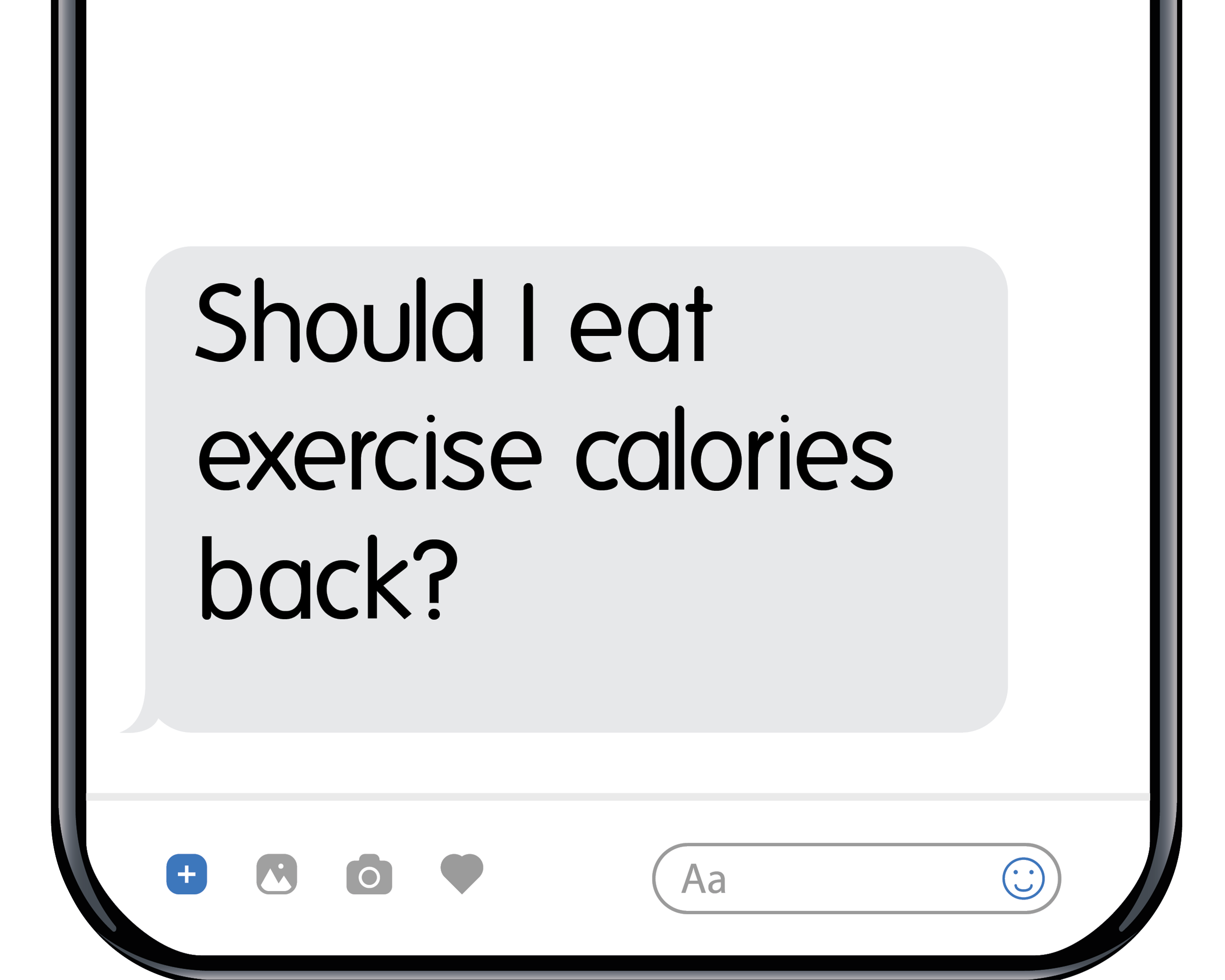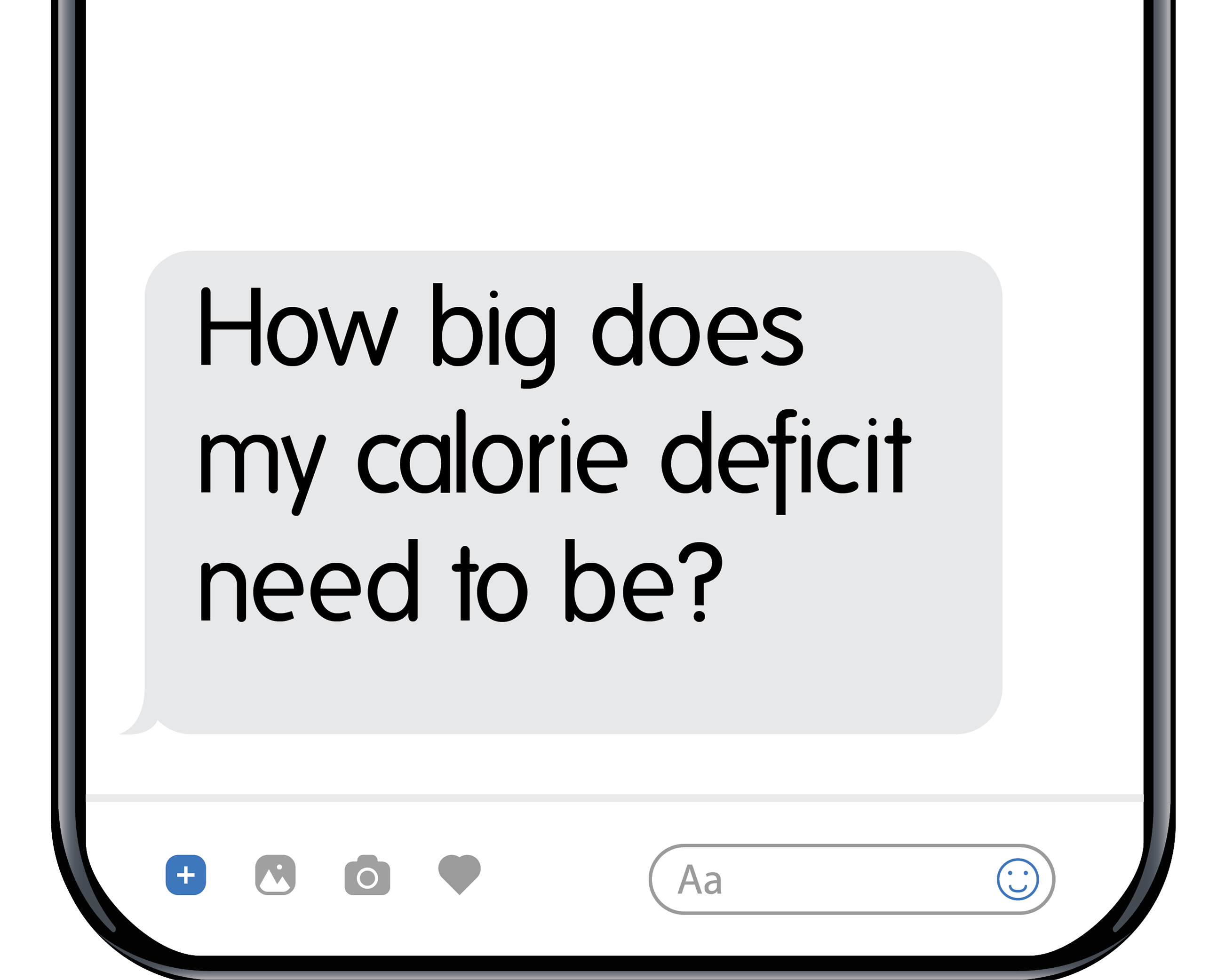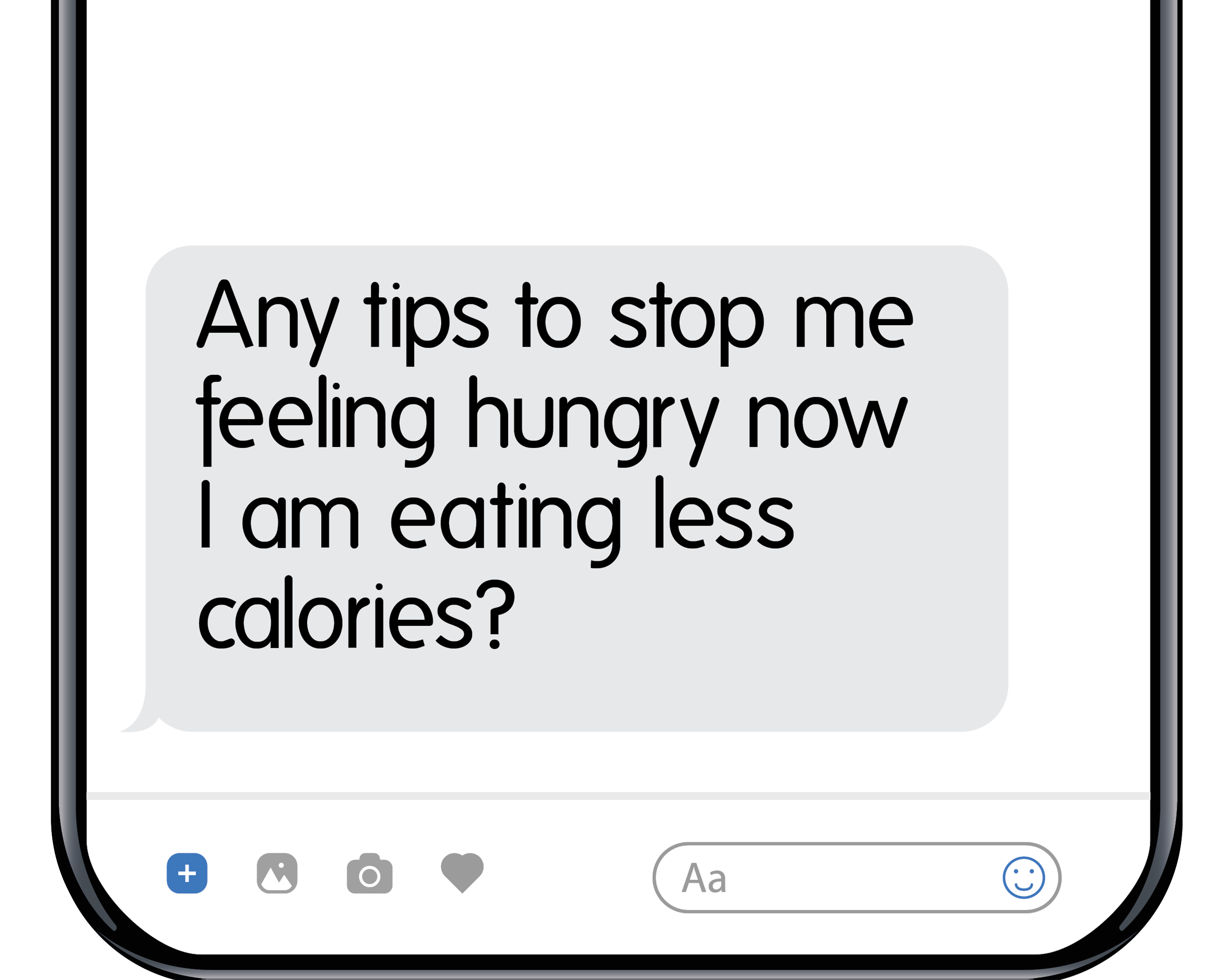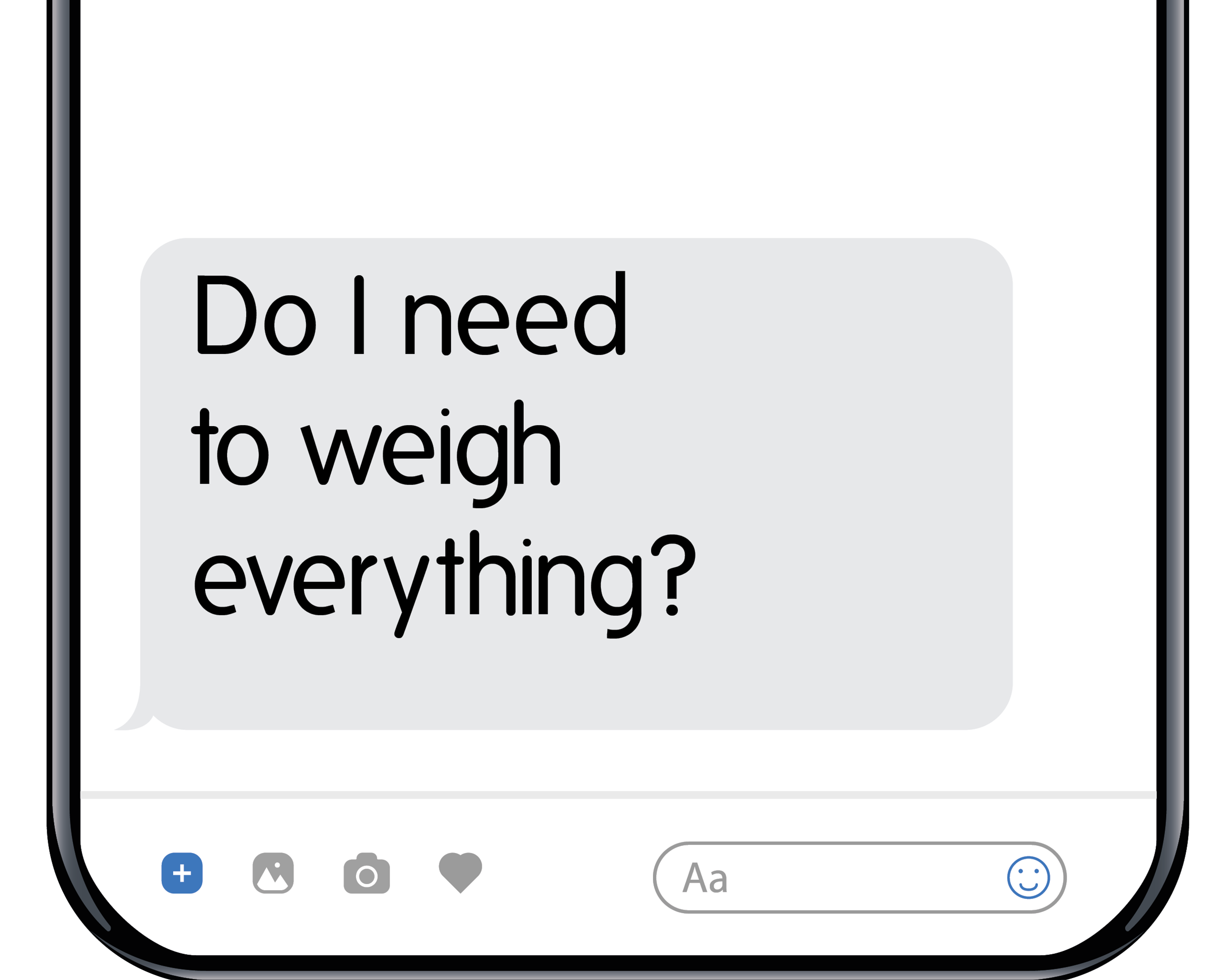6 common weight loss questions
Emma White - Nutritionist | 25 Aug, 2023
Understandably, people tend to have many questions about losing weight and eating healthy. But with all the noise out there online, it's easy to get confused and not know which way is up!
We have observed a number of themes that come up frequently with members, maybe because different sources give conflicting viewponts. Nutritionist Emma attempts to separate the nutritional fact from fiction, and answer some of the most commonly asked questions.
1Exercise calories

You should absolutely eat back your exercise calories if you are doing regular exercise sessions. If you don't, you could end up with a very low net calorie intake, which is not helpful for long-term weight loss success. The calorie allowance we calculate for you is already low enough to produce weight loss at the rate you have selected, so burning lots of extra calories through exercise and not refuelling appropriately will result in your calorie deficit being even bigger – potentially too big, making weight loss harder in the long term.
Be mindful of the type of activity you're recording as exercise though, as it's easy to overestimate exercise calories – and that could affect your weight loss. If you achieve most of your steps through generally pottering around, rather than active walks or runs for example, I don't recommend eating back these calories unless you really feel you need to. But if you’re heading out for an active walk or completing a workout at the gym or at home, then absolutely log this as exercise and aim to eat the calories back.
APP TIP
With our Combined diary view, your exercise calories are added to your daily food allowance so you can eat them back. We build in a little buffer to help reduce the risk of you eating back too many, so you start the day with 200 calories less than on the 'Separate' View. It means you need to burn over 200 calories per day before you can eat back additional calories burned. If you're logging exercise regularly, use our Combined diary view and eat back the recommended calories.
2Calorie deficits

Losing weight is about creating a calorie deficit, and in simple terms, the bigger the deficit, the more weight you'll lose. Here's the maths with actual figures.
The consensus is that 1lb of fat contains 3,500 calories, so to lose 1lb of fat, we have to create a deficit of 3,500 calories. This equates to the following daily calorie deficits to lose at different rates per week:
- To lose 0.5lb per week – need to create a deficit of 250 calories per day.
- To lose 1lb per week – need to create a deficit of 500 calories per day.
- To lose 1.5lbs per week – need to create a deficit of 750 calories per day.
- To lose 2lbs per week – need to create a deficit of 1,000 calories per day.
These are the calculations we use to work out your daily calorie allowance based on your chosen rate of weight loss.
Now although technically speaking the bigger the deficit, the more weight you'll lose, sometimes in reality less is better. If you create a very large calorie deficit over an extended period of time, you risk undernourishing and underfueling your body. What this can mean is that weight loss becomes unenjoyable and harder as time goes on. A maximum of 2lbs per week, so a deficit of 1,000 calories per day, is the maximum recommended for safe and sustainable weight loss.
3Unable to exercise

Yes absolutely. When it comes to losing weight, our diet is around 80% of the equation, with exercise and lifestyle factors having less of an impact. So as long as you’re sticking to a reduced calorie intake through your diet, you should still be able to lose weight even if you can't do regular exercise. Exercise can help make weight loss easier, but it is not essential for you to achieve this.
When losing weight without being able to be very active it is important to have realistic expectations, as weight loss may not be as quick as it would for someone who lives a very active lifestyle. A consistent loss of anything between 0.5lbs and 2lbs a week is considered good and sustainable. Remember, if you stick with it, every half pound will quickly add up to several pounds.
4Curbing hunger

It's not uncommon to experience some hunger initially when you lower your calorie intake for weight loss, but this usually gets easier after a couple of weeks as your body adjusts. That said, feeling hunger pangs at some points throughout the day is normal, and our body’s way of telling us we need energy – so don’t be afraid of the odd stomach rumble.
The foods we eat have an impact on how full and satisfied we feel, so the best way to avoid getting over hungry is to make smarter meal and snack choices. The key is to opt for filling nutrients like fibre and protein, and to avoid too much sugary food as this causes a temporary energy spike/dip. My top tips are:
- Base meals around protein and fibre – both extremely filling nutrients, these are your go-to for avoiding hunger. High-protein foods such as meat, poultry, fish, eggs, dairy, tofu, Quorn and pulses, plus high-fibre foods such as oats, wholegrain starchy carbs, quinoa and other grains, nuts, seeds and pulses.
- Bulk out meals with highly nutritious fruits and vegetables – include a variety of low-calorie fruits and vegetables in your meals to add bulk, and snack on these throughout the day to avoid feeling too hungry.
- Eat smaller meals more frequently – it can be best to opt for smaller, more frequent meals to ensure our brain gets a steady supply of energy and our tummy doesn't become empty for long.
- Avoid too much refined sugary foods and white carbs – these foods may provide an instant energy hit, but this is often followed by a crash in blood sugar levels which leaves us feeling hungry and craving more sugar.
5Sugar in fruit

To be completely clear, for most of us fruit is a great choice for a healthy snack or to include as part of a meal. Fruits are natural foods, rich in vitamins, minerals, fibre and water, and can provide a healthy dose of energy throughout the day.
There can be concerns around high fruit consumption because of the natural sugar content, but it's important to note that just because fruit and chocolate contain sugar, it doesn't mean eating them has the same impact. In whole fruit, the natural sugars are locked into the cell structure, so not as easily available as sugars in foods like cakes or chocolate. And because fruit sugars tend to take longer to be digested and move into the bloodstream, there isn't the same sugar spike and corresponding blood sugar crash that we see with confectionery. Plus, all that lovely fruit you are eating contains fibre in the skin, and as we know, fibre helps to keep you feeling fuller. So, your fruit choice has this added benefit.
But too much of anything is never a good thing, so striking the right balance with fruit is important. While we absolutely recommend eating a piece of fruit in preference to a chocolate bar, having large quantities of fruit at several intervals throughout the day wouldn't be good either. We recommend getting a balance of fruits and vegetables to make up your 5-a-day target, as vegetables offer a lower-sugar option which is also rich in vitamins, minerals and fibre.
APP TIP
In the Nutracheck app you can see your sugar stats at a glance and check your split of all sugars against those from fruit and veg. Open the app and tap on the white chart icon in the top right. In your nutrient bar chart, you will see your fruit and veg sugars highlighted in dark green. If you want to keep a closer eye on your sugar intake, switch one of your nutrient columns to track sugar. To do this, tap on the blue menu button (to the right of the search bar), followed by 'Diary Preferences' > 'Nutrient Choices'.
6Weighing foods

Initially when starting out with the food diary approach, we do recommend weighing what you eat to help you get a visual guide of what a typical portion is. It can be all too easy to underestimate certain foods. I'm still blown away by how small a 30g serving of cereal is for example, and I’d bet most of us serve ourselves at least double this amount for breakfast. To ensure you are creating a calorie deficit, you need to know exactly what you're eating rather than guessing and wildly underestimating the portion size and therefore calorie content.
Of course, fruits and vegetables are less of an issue as they tend to be lower in calories. But even so, it’s very easy to assume a banana is a 'medium' when it is in fact extra-large, and this can be quite a difference in terms of calorie count. So start out by weighing absolutely everything, and over time you will learn what a 'medium' apple or typical serving of cereal looks like, so you won't have to weigh every food ongoing.

Nutritionist Emma White (ANutr), MSc Human Nutrition is passionate about how food science applies to the human body, and how the nutrients in what we eat affect us and ultimately have an impact on our health.












